Alphabet Everywhere is a visual ABC treasure hunt. Eric Kaufman’s eye and camera pick out letters in the most unusual places. Each letter is represented by multiple images, with some letters being obvious and others requiring a bit more imagination to recognize. The photos in this book allow children to see the familiar letters in new ways—encouraging visual literacy and creativity. This delightful book is appropriate for preschoolers as well as children who have already mastered the alphabet.
You are here
A Baker's Dozen: The Best Children's Books for Family Literacy
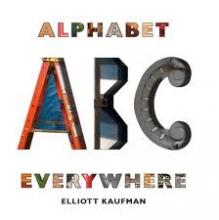
Alphabet Everywhere
Tips for Using with Children
Provide children with alphabet strips or cards. After naming the printed alphabet letters, look through the pictures in the book and ask the children to point to and trace the letter in each picture. Use the index in the back to talk about where each picture was taken.
Tips for Using with Families
Reading Alphabet Everywhere will help children learn letter names and increase visualization of these letters. A family might enjoy taking an indoor or outdoor ABC treasure hunt, trying to spot as many letters as they can in unusual places. Using cell phones or cameras, "letter" pictures can be taken and uploaded to family web pages or printed to create a "Family ABC" book.
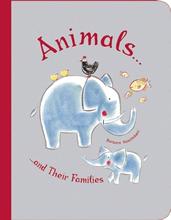
Animals and Their Families
Animals and Their Families is a great nonfiction title for the preschool set. Young children will be enthralled by the thirty-two animal families and their habitats featured in this book. Each left page shows a silhouette of an easily identified animal, such as a horse. The following page presents a simple illustration of the animal family in its habitat. The names of the family members are labeled—in the horse’s case—stallion, mare, and foal. Along the bottom of each family page are additional facts about the animal’s sound, home, and meal. The animal mix includes a few pets and farm animals but most of the animals live in the wild.
Tips for Using with Children
When reading this book to children, play a “Who Am I?” game with the silhouettes on the left-hand side of each two-page spread. After the children guess the animal, share the facing page which describes the family names, the sound, the home, and the meal of each animal. Reread the book by showing the silhouette, asking children to name the animal and describe the sound, the home, and the meal of each animal without looking at the right-hand side of the page.
Tips for Using with Families
This is a book that children will come back to look at again and again. Explain to parents that the book is one that you wouldn't have to read from beginning to end. It's like a reference book for young children, and once you've picture-walked and read the information about each animal family with children, they will want to spend time looking at their favorite pages on their own.
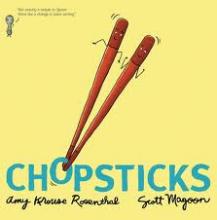
Chopsticks
In this charming companion book to Spoon (2010), Chopsticks are best friends. They go everywhere and do everything together. While learning new tricks, the tip of Chopstick’s leg is snapped apart. He is “whisked away,” glued, and bandaged back together, but he must stay off of it while it sets. Through the recuperation period, the two chopsticks learn lessons about friendship and that being apart can make their friendship even stronger.
Tips for Using with Children
Provide children with a variety of plastic kitchen utensils and googly eyes to create puppet performances that will help them retell the story and give them the opportunity to create their own friendship stories.
Tips for Using with Families
The Chopsticks learn that a variety of activities can be fun on their own as well as together. This story's theme lends itself to a parent discussion of how to encourage children to play productively alone. Talk about the kinds of activities, places, and situations that lend themselves to solitary play. Remind parents of the value of independent play.
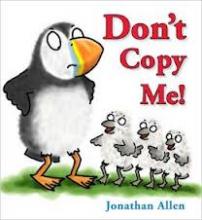
Don't Copy Me!
In Jonathan Allen’s book Don’t Copy Me!, Little Puffin is annoyed when Small Gull, Tiny Gull, and Baby Gull copy everything he does. It is a simple story that every young child can relate to, especially if they have younger siblings. Little Puffin thinks his problem is solved creatively and without losing his temper. But, is his problem really solved?
Tips for Using with Children
Invite children to listen to the story and then reread the story to the group with children taking on the parts for each of the Puffin chicks. If time allows, children will enjoy playing Follow the Leader or Simon Says.
Tips for Using with Families
Discuss with parents the importance of teaching their children to acknowledge and respect the feelings of others. Suggest to parents that they encourage their children to join in and read along the parts that are repeated (e.g., Small gull, tiny gull and baby gull). Point to the words as you read them.
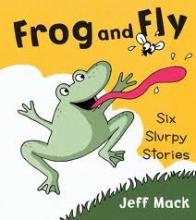
Frog and Fly: Six Slurpy Stories
These six slurpy very short stories will tickle funny bones and make beginning readers laugh out loud. Frog loves to eat flies and in the first five chapters of this comic-style book, the clever, slurping frog uses a little wordplay and trickery to end up with a fly snack. In the sixth story, turnabout is only fair and the joke is on Frog as he gets a slurping bear surprise!
Tips for Using with Children
After reading the book to children, ask them what they notice about each of the stories in the book. Children are very observant and eager to share their knowledge and understanding of a story. Children may mention some of the following: that each story is numbered, there are six stories, each story is in a different background color, the words are in bubbles, there are two main characters in the story, there are some other characters like dog, pig, and bear, the word slurp is always in red with an exclamation point, the frog usually figures out a way to eat the fly until the end, the frog and the fly have eyes that are alike, the pictures look like cartoons in the newspaper, each story is a frog joke, etc. A discussion like this can help children to understand different formats in books and begin to internalize story structure.
Tips for Using with Families
Children will find the stories in Frog and Fly: Six Slurpy Stories very entertaining, and will ask to hear them over and over again. Explain to parents that reading for pleasure is an important part of emergent literacy. A book like Frog and Fly: Six Slurpy Stories will help children see that reading and looking at books is fun. After a first reading of the book, parents can point to each word bubble as it is read and encourage their children to repeat the word. Soon children will be reading this book independently.
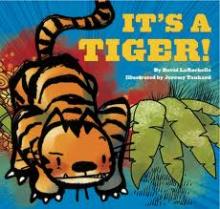
It's A Tiger!
Suspense will build as readers journey through this book, and find a tiger at every turn! Each page provides a new scenario where readers can search the illustrations to see if they are safe from the tiger prowling across the pages. On each page there is a new clue that leads to the repetitive exclamation, “It’s a tiger!” Children will love to shout the title phrase, often before the page even turns. Adults and children (and especially bedtime story readers) will enjoy the heartwarming twist at the end.
Tips for Using with Children
This is a story that invites children to be actively engaged in the storytelling. As the main character in the story inches his way through the bat-filled cave, climbs up a ladder, and swims to an island, children will enjoy doing these motions along with him. Children may sense the pattern of the book and predict the appearance of the tiger. This is a great opportunity to talk about prediction and look carefully for clues on each page that support their predictions. It might be fun to find a picture of a tiger or a cuddly stuffed tiger that children can hide around the classroom or at home. Adults can then ask the child for “clues” about where the tiger might be hiding!
Tips for Using with Families
As adults, we often focus on the written words within a story. Children hear the words, but focus on the illustrations. Because of this, they often notice clues about the story that help them make predictions about what might happen next. An interesting activity to try with families could be allowing them to tell the story by focusing on the pictures. Do they notice any details that they might have missed otherwise—like the pair of green eyes peeking out of the treasure chest? This book also involves using expression to tell a story—so practicing when to whisper the words, when to shout, and when to add movements to the story could be helpful. What text clues help us know when and how to change our voices when reading? Families will get a lot of practice with this technique—because this is a book children will want to hear over and over again!
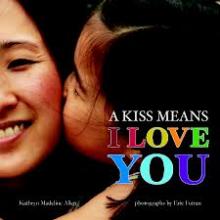
A Kiss Means I Love You
This fun book with large photographs of real children captures emotions and body language in an upbeat manner. The simple, authentic, and rhyming text expresses feelings and actions quite familiar to children.
Tips for Using with Children
After reading this story, encourage children to comment on their favorite pictures. Have children either draw themselves using their bodies and facial expressions to depict a feeling, or take pictures of them acting out different emotions. These pictures can be combined into a book. Assist them in writing captions about their pictures—either in the same format as the book (A _____ means ____ ) or any way they like.
Tips for Using with Families
Explain to families that children may want to talk about times they have had feelings like the ones depicted in the book. Families can encourage them to discuss these feelings. Children will want to hear this book several times. During these readings, pause after the word “means” in each line, and the child may fill in the next words with you. Parents can also note the rhyming words they are saying.
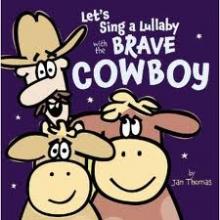
Let's Sing a Lullaby with the Brave Cowboy
A “brave” guitar-strumming cowboy begins his lullaby to two sleepy cows, but his imagination gets the better of him and he begins to see spiders, snakes and a bear. The cows reassure him, though when real danger appears, the cowboy imagines the wolf as a bunny rabbit. Thank goodness even the wolf wants a lullaby. Thomas’ comic characters have very expressive faces that will appeal to even the very youngest readers and the speech bubbles with exploding words allow the story to become a great read-aloud.
Tips for Using with Children
As you read the book, use a familiar tune for singing the lullaby (e.g., I’m a Little Teapot), and urge the children to sing along. Show them how to pause in their singing at the ellipsis—making for playful suspense. They will be delighted to read/shout the “Eeeeek!” at the end of the lullabies. If it’s a sunny day, go for a Shadow Walk. If not, set up an activity center with a large flashlight or a beamed lamp where children can make their own shadows. Ask questions such as—what happens to your shadow when you move closer/further from the light? Can you make a scary shadow? Can you and a friend make a shadow together?
Tips for Using with Families
Discuss the importance of visual literacy. Reading the pictures is just as important as reading the words of the story. When children are skilled at reading pictures, they often understand stories better and can make good guesses about the words that they are reading. This book with its large cartoon illustrations is a perfect vehicle for inviting children to read picture cues. Some examples are:
- Check out the cowboy's and the cows' expressions during the story and talk about whether they are calm or worried. Talk about why that is.
- Notice that when the shadow says "grrr," the "Eeeeek" is coming from the cows' mouths, not the cowboy's mouth.
- Ask children to look at the wolf and decide if he is coming to scare the cowboy and cows—why or why not? (Notice his night cap and pajamas).
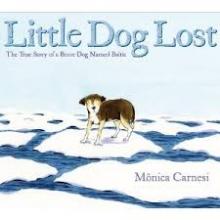
Little Dog Lost: The True Story of a Brave Dog Named Baltic
There is a dog adrift on a sheet of ice in a frozen river for two days. He travels seventy-five miles. But after a failed attempt to rescue him, he drifts out to the Baltic Sea. The suspense in his plight and excitement in his ultimate rescue are depicted charmingly by the text and the watercolor and ink illustrations. Children will be captivated by this true story of an endearing dog and the people who cared about him.
Tips for Using with Children
Before reading the story, talk to children about the differences between a true and a fictional story, mentioning familiar tales such as “The Three Bears.” Children will want to say along with you some of the text: “Don’t be scared, Dog!” “Oh no? Where is Dog?” At the end of the book, each child may want to tell their favorite part. Show them the map on the inside cover of the book so that they can trace the path of the dog and retell the story. Be sure to show children the last page—which contains two pictures of the real Baltic and his owner. There are also news reports and footage of the rescue on the Internet.
Tips for Using with Families
Explain to parents that there are many opportunities in this book to engage children in higher level thinking. Talk to them about the differences between true stories and make-believe stories. Make sure the children see the picture of the real Baltic at the back of the book. There are several vocabulary words, such as sea, ocean, seaman, paddle, and weak, which you may want to discuss with them. There are several places in the book in which youngsters could be asked to make predictions. Families could encourage their children to retell the story by following the map with their fingers.
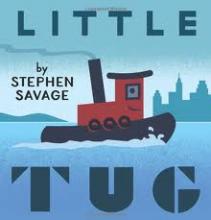
Little Tug
This book introduces us to a little red tugboat that may not be the tallest, fastest, or biggest boat in the harbor. However, Little Tug plays a very important role supporting other ships in need. His friendship is appreciated by the other boats, and when their work is done, they each contribute a special part to Little Tug’s bedtime routine. Sweet and simple with charming illustrations, this book will be sure to "tug" at your heart.
Tips for Using with Children
This book will spark children’s interest on several levels. Talk about the different kinds of boats that appear in the story and how each of them does a special job and moves in various ways. Children may like to look at pictures of different tugboats and talk about the ways that they are helpful. What would happen to the tall ship, the speedboat, and the ocean liner if Little Tug wasn’t there to help? Children may also be curious about the fact that even though Little Tug is the smallest boat in the water, he is very, very helpful. Ask children if they can think of ways in which they help each other or the adults in their lives. Adults could create a list of all the ways that children are helpful and very important in the lives of others.
Tips for Using with Families
If families are not familiar with the different kinds of boats featured in the story, it might be helpful to talk about the boats or even research some simple facts about them prior to reading This will prepare the adults for any questions children may have. Because the boats help Little Tug prepare for bedtime, families can talk about the bedtime routines that their child has at home and how they are similar to or different from Little Tug's. Another fun activity families could try is talking about "humming." In the story, the speedboat "hums" a lullaby to Little Tug. Talk about the difference between humming and singing. Families can try humming a familiar lullaby ("Twinkle, Twinkle, Little Star" is one example) together.
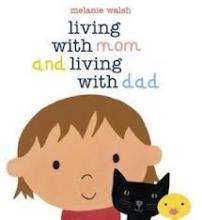
Living with Mom and Living with Dad
In this honest, reassuring story, a little girl describes her two homes—one with her mom and her cat, and the other with her dad. Through creative illustration, readers can lift the flap on each page to see the differences (and similarities) in both settings. The routines that comfort her are present in both homes, and she tells the reader how her mom and dad meet her needs in different ways. The realistic examples speak of the love this little girl has for her family, and the love and support she receives in return. This is a wonderful book to share with any child and a chance to talk about the individuals who make up their family.
Tips for Using with Children
During and after the story, children may want to share their own experiences in living in more than one home. Though some may do so because of a divorce, others may spend parts of the week or summers with their friends or relatives. Allow time for children to share their thoughts and experiences. After reading the story, provide large construction paper, crayons, markers, scissors, and glue. Invite children to draw houses and make lift-the-flap rooms. Point out that they could make a house they know or one that they imagine. Review some of the things described in the book, encouraging the children to make their house drawings as detailed as possible. Remind them to include people and pets. Provide time to talk about their homes when they have finished.
Tips for Using with Families
This book is an excellent addition to the lending library of a Family Literacy Resource Center. It portrays a child who clearly has positive experiences in a co-parenting arrangement. It is probably best used in an individual way, shared with parents who are ready to talk about their divorces and to think about how to make the divorce easier for the child. When sharing this book with an individual or family, point out the many ways the situation portrayed here is positive for children: consistency in the child's routine, having a place for her and her belongings, feeling secure in both places, having special activities she does with each parent, having a large extended family that cares about her. It might be helpful to make a personal book modeled after this.
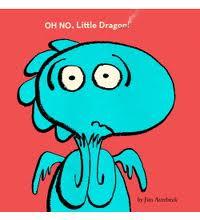
Oh No, Little Dragon!
Oh No and Uh Oh! Little Dragon has accidentally lost his spark. One moment, he was huffing and puffing, streaks of fire here and there, and the next, he swallows a little too much water in the bathtub—just enough to douse his flame. He tries valiantly to rekindle the flame, using tactics like eating hot chili peppers and dressing in his warmest clothing. Just when he thinks that nothing can put a spark back in his heart, he receives a gentle kiss on the snout from his mother, which does the trick. Don’t be afraid to pick up this book and get your hands sooty—meeting Little Dragon is well worth it.
Tips for Using with Children
Dragons can sometimes be a little scary—but not when you can have fun becoming one yourself! Children will love pretending to breathe fire just like Little Dragon. The sounds of this action are exciting to repeat, and as children “phoosh!” and “phoo-phoosh” they are immediately drawn into the story. Prior to reading the story, talk with children about the characteristics of fire, and the ways a fire can be put out. This book also provides a nice opportunity to talk about Little Dragon’s expressions and when he might be feeling brave, worried, sad, or happy. Children may want to make connections to when they feel these emotions as well. Another fun activity to try might be using red and yellow paint and some glitter so that children can design their own fiery creations!
Tips for Using with Families
Many adults who have helped wipe the tears and comfort a child will feel a warm spark in their heart when reading this story. Children need reassurance and help in solving problems, and as adults we can help them work through these problems. Ask parents to think about this when they are reading the story, so that they can talk to their child about the way Little Dragon may be feeling during various parts of the story. How did he lose his spark? What did he do to try and get his spark back? Why is he wearing a snorkel for bath time at the end of the story? Asking children questions can help them build problem-solving and critical thinking skills that are important for school success, and it provides families with wonderful insight to hear children's responses and how they view the world.
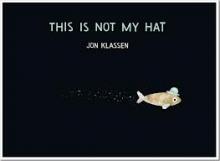
This Is Not My Hat
A little fish has stolen a hat from a very big, sleeping fish. As he swims away to hide, he contemplates how he will get away with it—but with every thought he has, the big fish outwits him. Varying eye movements, bubbles, and a black water background that makes the subtle colors quite attractive, engage readers of all ages. Children will wonder what goes on in the seaweed when both fish are hidden. They will enjoy the humor of this companion book to I Want My Hat Back (2011).
Tips for Using with Children
Have a discussion with the children about the funny parts of the book. On a piece of paper, the children can draw a picture or glue on pictures of fish and then try to hide them by drawing underwater plants that are “big and tall and close together" over it. You could also give them different colors of tissue paper to cut or tear to form seaweed to cover the fish. For a second reading, children would enjoy acting out the story in groups of three or taking turns in a large group. Someone could hold up a blanket for the seaweed as children slip behind it.
Tips for Using with Families
Talk to parents about discussing the humor with the child when reading this book. They could be encouraged to point out the eyes of the big fish and how, for each part of the little fish's plan, the opposite occurs. The family members can take time to discuss what might be happening in that seaweed. Vocabulary (steal, notice, worry, etc.) can be used at other times.
